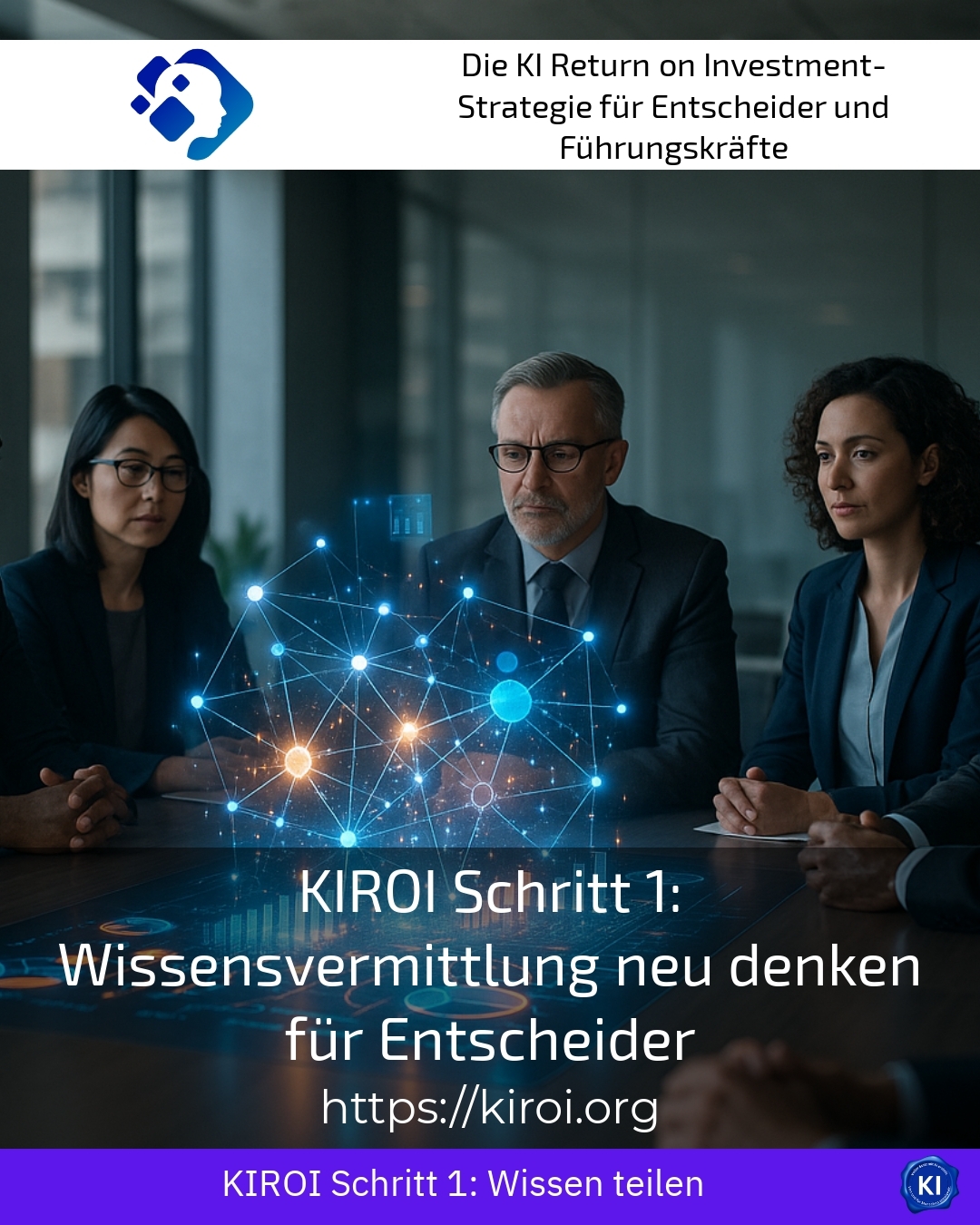The modern art of knowledge transfer requires decision-makers to question and rethink old paradigms. This not only enables the transfer of information, but also its sustainable anchoring and application. Knowledge transfer is key when it comes to involving employees, teams or entire organisations in change processes and building skills.
KIROI Step 1 focuses on knowledge transfer as a strategic and holistic concept. Decision-makers learn how to communicate in a target group-orientated way, provide individual support and actively shape the learning process using state-of-the-art methods and digital tools.
Rethinking knowledge transfer: more than just passing on information
Traditional knowledge transfer often means passing on knowledge statically from one source to learners. But for sustainable success, decision-makers today need to adopt more flexible approaches. In practice, there are various approaches that focus more on the needs and previous experience of the target group.
For example, management consultancies often rely on digital learning platforms that employees can use to access individualised content at any time. In this way, KIROI Step 1 supports the design of a learning process in which learners acquire knowledge independently and at their own pace, supplemented by accompanying coaching sessions.
In the healthcare sector, simulations and case studies help to make complex processes understandable. KIROI supports the careful planning of interactive learning content and reflection phases. This promotes the transfer of what has been learnt into everyday working life, which managers often report as particularly valuable.
Best practice is also evident in the financial sector: storytelling makes rules and risks tangible. Narrative scenarios make it easier for employees to understand the significance of regulations and make informed decisions. This brings knowledge transfer to life and makes it stick in the memory.
Methods and tools for contemporary knowledge transfer
Successful knowledge transfer depends on the right method. KIROI Step 1 recommends a mixture of proven and innovative techniques that create transparency and take individual learning needs into account.
The use of scaffolding is exemplary: complex knowledge is broken down into manageable units and taught step by step with targeted support. In this way, learners develop self-confidence and deepen their understanding in the long term.
Digital tools also play a major role. They not only enable access to learning materials, but also promote exchange and collaboration across geographical boundaries. Interactive whiteboards, webinars and e-learning modules make the learning process flexible and customisable.
Another tried and tested method is the use of visual aids: Mind maps, diagrams or animated explanatory videos make it easier to grasp and retain information. These visualisations make even complex knowledge more accessible and attractive.
The active involvement of learners through group work, discussions or role plays also helps them to experience and apply their knowledge. In the spirit of KIROI, this creates a lively, interactive learning environment in which participants remain motivated and involved.
In addition to these methods, many organisations also use reflection phases to strengthen the transfer of learning. Here, practical experiences can be discussed and new insights can be integrated into everyday working life. KIROI Step 1 promotes this process through targeted moderation and individual coaching.
BEST PRACTICE with one customer (name hidden due to NDA contract) shows how a medium-sized company was able to sustainably improve knowledge transfer through a customised digital learning programme. Employees can access practical learning videos and interactive exercises at any time. Accompanying coaching sessions helped them to consolidate and apply what they had learnt in their day-to-day work. The result: increased expertise and an open dialogue within the teams.
Knowledge transfer as support in the project environment
Change projects in particular show how important accompanying knowledge transfer is. KIROI positions itself here as a supporting force that helps decision-makers to manage the learning process in teams and increase acceptance of innovations.
An example from the consultancy illustrates that clear communication and an open feedback culture are crucial. The transfer of knowledge about new processes or tools is not a one-off process, but a continuous dialogue. In this way, decision-makers support sustainable change within the company.
It has also been shown in production that small, well-planned learning units on site have an impact. Employees learn through practical exercises, accompanied by experienced coaches, which makes it easier to implement new processes.
In the service sector, on the other hand, managers use storytelling and case studies to make complex issues tangible and sensitise teams to topics such as compliance or data protection. This makes knowledge transfer manageable and practical.
BEST PRACTICE with one customer (name hidden due to NDA contract) describes a manager who accompanied a cultural change through targeted knowledge transfer and coaching. Employees were empowered to take responsibility and develop new skills through regular workshops and digital learning impulses. This led to a measurable improvement in collaboration and the climate of innovation.
My analysis
Knowledge transfer is much more than simply passing on facts. KIROI Step 1 shows that decision-makers can better meet the needs of learners with targeted methods, digital tools and individualised support. The combination of interactivity, reflection and practical design creates sustainable learning processes. The examples from different sectors show how versatile and effective this approach is. In this way, knowledge transfer can accompany projects, strengthen skills and make organisations fit for the future.
Further links from the text above:
Knowledge transfer - definition and forms
Rethinking knowledge transfer: KIROI Step 1
Methods and importance of knowledge transfer
Techniques for successful knowledge transfer
Methods for brainstorming and knowledge transfer
For more information and if you have any questions, please contact Contact us or read more blog posts on the topic Artificial intelligence here.















